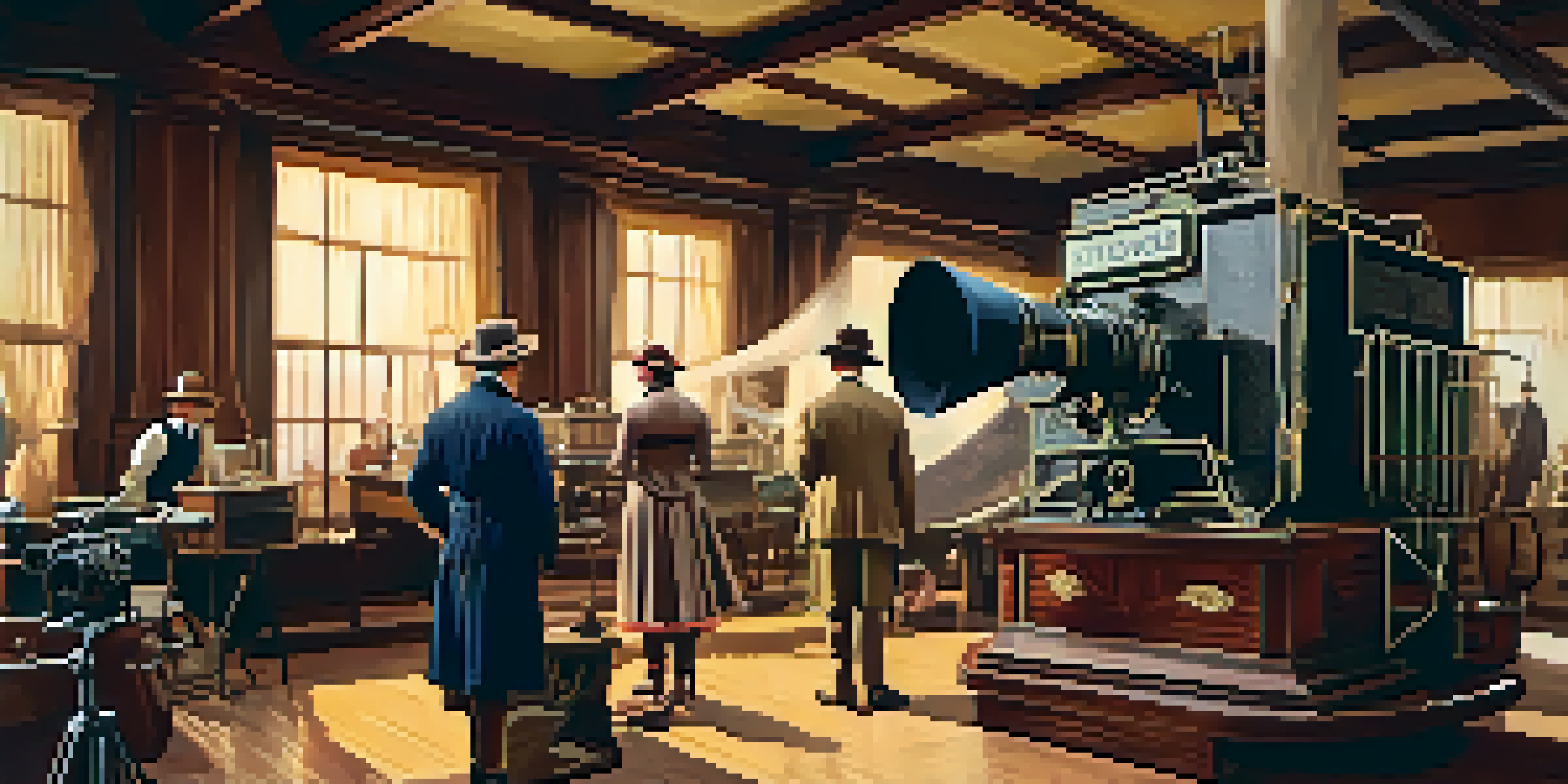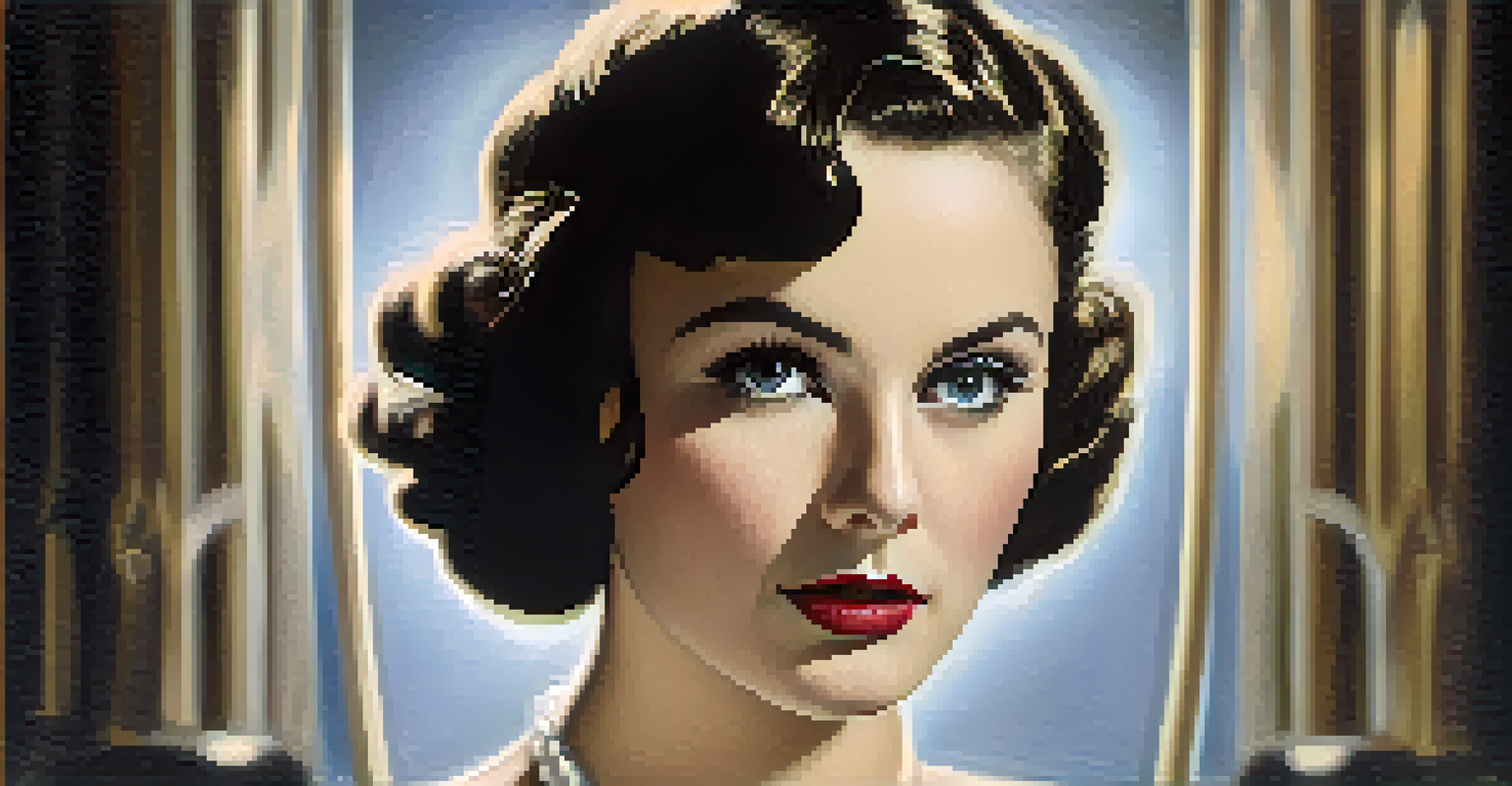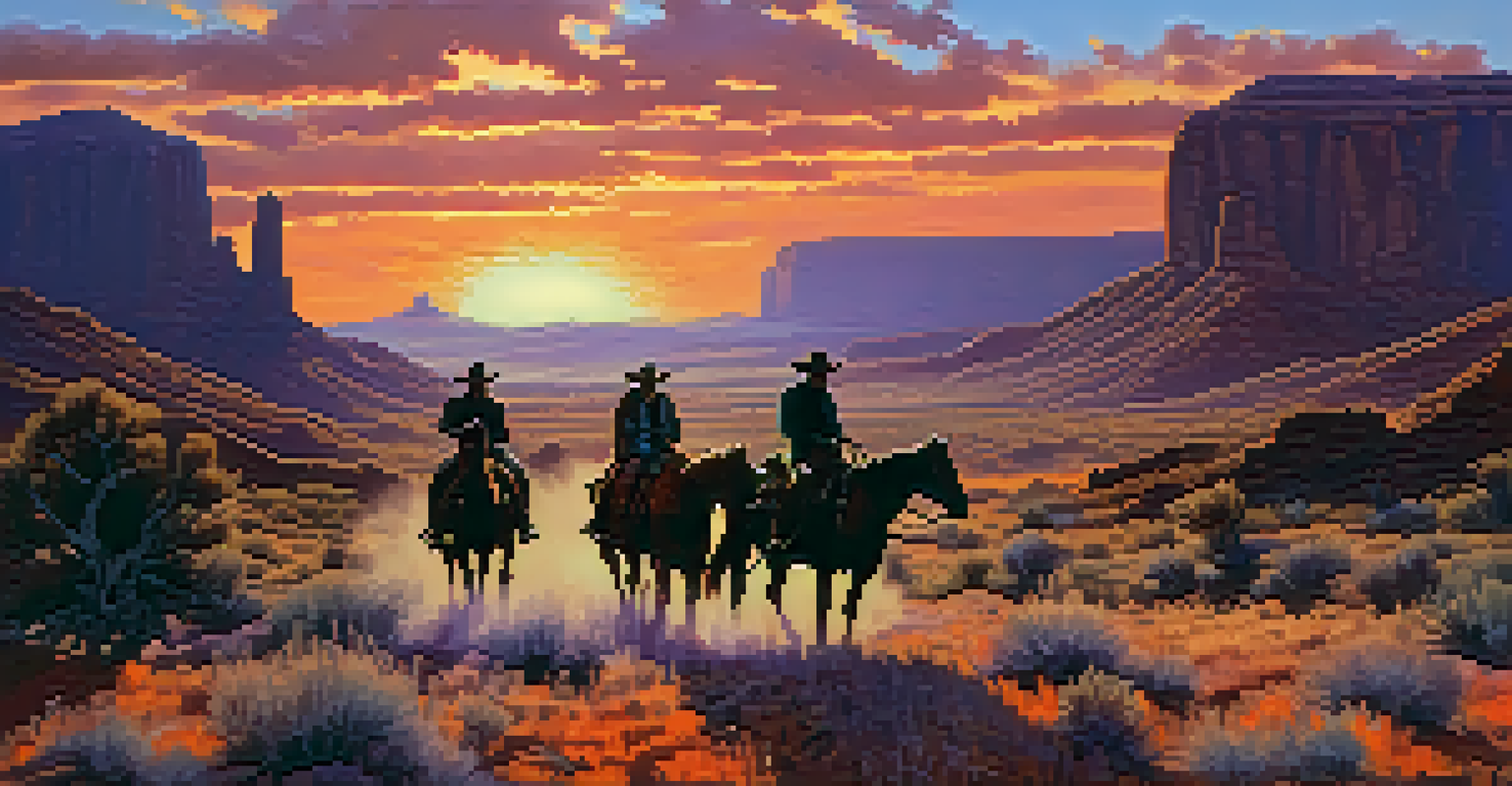The Birth of Hollywood: A Look at Early Film Innovations

The Dawn of Moving Pictures: A New Era Begins
The story of Hollywood begins with the invention of moving pictures in the late 19th century. Pioneers like Thomas Edison and the Lumière brothers experimented with devices that could capture and project motion. This new medium quickly captured the public's imagination, paving the way for the film industry we know today.
The magic of the movies is not in the film itself, but in the stories we tell and the emotions we share.
By the turn of the century, short films became popular attractions at fairs and vaudeville shows. Viewers were mesmerized by the simple yet captivating images that seemed to come to life on screen. These early films laid the groundwork for storytelling in cinema, as filmmakers began to explore narrative techniques and visual styles.
As interest in moving pictures grew, so did the need for a dedicated space to produce and showcase films. This demand led to the establishment of film studios, setting the stage for Hollywood to emerge as the epicenter of the film industry.
Innovations in Film Technology: Paving the Way
Technological advancements played a crucial role in the evolution of early cinema. The introduction of the Kinetoscope by Edison allowed individual viewers to experience moving images in a more immersive way. This innovation sparked a wave of creativity, inspiring inventors and filmmakers to push the boundaries of what was possible.

The use of celluloid film, which was more flexible and durable than earlier materials, revolutionized the industry. This advancement enabled filmmakers to produce longer films and experiment with more complex narratives. It also facilitated the distribution of films, making them accessible to a wider audience.
Hollywood's Origins in Moving Pictures
The invention of moving pictures in the late 19th century laid the foundation for the film industry, captivating audiences and prompting the establishment of film studios.
Moreover, the adoption of synchronized sound in the 1920s marked a significant turning point in filmmaking. Though this came a bit later, the innovations leading to it set the stage for sound films, transforming the way stories were told on screen and enhancing the overall viewing experience.
The Birth of Star Power: Actors and Actresses Shine
As films grew longer and more complex, the importance of actors became increasingly apparent. The audience began to connect with performers, leading to the rise of 'star power' in Hollywood. This phenomenon not only drove ticket sales but also transformed actors into cultural icons.
Film is a powerful means of communication and an art form that can change the world.
Silent film stars like Charlie Chaplin and Mary Pickford captured the hearts of millions, becoming household names. Their performances were characterized by expressive body language and emotive facial expressions, which resonated with viewers even without sound. This era solidified the idea that a film's success could hinge on its leading actors.
The allure of stardom also led to the establishment of fan clubs and publicity campaigns, further enhancing the connection between stars and their audience. This relationship would evolve over time, but the roots of Hollywood's star system were firmly planted in these early years.
The Emergence of Film Genres: A New Language
As filmmakers became more adept at storytelling, distinct genres began to emerge, each with its own conventions and audience appeal. The Western, for example, became a staple of early Hollywood, capturing the spirit of adventure and the rugged American landscape. These genres not only entertained but also reflected societal values and cultural narratives.
The rise of the comedy genre, particularly with silent film comedies, showcased the importance of humor in cinema. Filmmakers like Buster Keaton and Harold Lloyd created timeless classics that relied on physical comedy and clever gags, captivating audiences of all ages. This emphasis on humor would continue to evolve, influencing future comedic styles.
Technological Advances Revolutionize Film
Key innovations like the Kinetoscope and synchronized sound transformed filmmaking, enabling longer narratives and enhancing the overall viewing experience.
Moreover, the horror genre began to find its footing during this period, with films like 'The Cabinet of Dr. Caligari' exploring psychological themes and visual experimentation. These early genre films laid the groundwork for the diverse array of cinematic experiences that would flourish in later decades.
The Role of Directors: Visionaries Behind the Camera
While actors captured the audience's attention, directors emerged as the creative visionaries who shaped the narrative and visual style of films. Figures like D.W. Griffith revolutionized filmmaking with innovative techniques such as close-ups and cross-cutting, which enhanced storytelling and emotional impact.
Griffith's groundbreaking work on 'The Birth of a Nation' showcased the power of film as a medium, despite its controversial themes. His techniques influenced countless filmmakers and set the stage for the modern cinematic language we recognize today. Directors began to take on more prominent roles, crafting their unique styles and leaving a lasting legacy.
The director's role would continue to evolve, but these early innovators paved the way for future generations. Their ability to blend storytelling with technical prowess helped establish the foundation upon which Hollywood would build its grand narratives and iconic films.
The Rise of Film Studios: The Birth of the Industry
As the demand for films increased, so did the need for organized production facilities. This led to the establishment of major film studios in Hollywood, such as Universal and Paramount. These studios became the backbone of the industry, providing resources, talent, and infrastructure necessary for large-scale film production.
The studio system not only streamlined film production but also fostered a sense of competition among filmmakers. Each studio sought to create the next big hit, leading to a flurry of creativity and innovation. This environment encouraged collaboration among writers, directors, and actors, resulting in classic films that would stand the test of time.
Cultural Reflections in Early Cinema
Early Hollywood films often mirrored societal challenges and global events, using storytelling to provide both escapism and commentary during times of uncertainty.
Moreover, the studio system allowed for the creation of star contracts, which solidified the relationship between studios and actors. This practice ensured that popular stars remained tied to specific studios, ultimately shaping the careers of many legendary figures in Hollywood's history.
The Impact of World Events on Early Hollywood
The early years of Hollywood were not insulated from the world outside. The impact of global events, such as World War I and the Great Depression, influenced the themes and styles of films during this period. Filmmakers often used their art to reflect societal challenges, providing an escape or commentary for audiences grappling with uncertainty.
For instance, the aftermath of the war led to a surge in anti-war films, while the economic struggles of the Depression prompted filmmakers to create stories of hope and resilience. These narratives resonated with audiences and helped to define the cultural landscape of the time. Films became a way for people to process their experiences and find solace.

Additionally, Hollywood began to embrace international influences, incorporating diverse storytelling techniques and styles. This openness to global perspectives enriched American cinema and laid the groundwork for future collaborations and cross-cultural exchanges in the film industry.